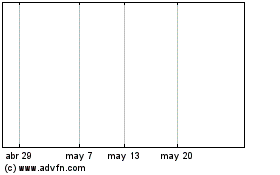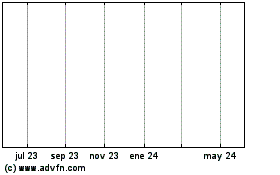TIDMAZN
RNS Number : 7677Y
AstraZeneca PLC
09 May 2023
9 May 2023
Farxiga extended in the US to reduce risk of cardiovascular
death and hospitalisation for heart failure to a broader range of
patients
FDA approval means patients with heart failure can benefit from
Farxiga
regardless of left ventricular ejection fraction status
AstraZeneca's Farxiga (dapagliflozin) has been approved in the
US to reduce the risk of cardiovascular (CV) death, hospitalisation
for heart failure (hHF) and urgent heart failure (HF) visits in
adults with HF. The approval by the Food and Drug Administration
(FDA) was based on positive results from the DELIVER Phase III
trial.(1) Farxiga was previously approved in the US for adults with
HF with reduced ejection fraction (HFrEF) .
Ruud Dobber, Executive Vice-President, BioPharmaceuticals
Business Unit, AstraZeneca, said: "Approximately half of heart
failure patients die within five years of diagnosis, highlighting
an urgent unmet need for well-tolerated treatment options that can
bring life-saving benefits and reduce the risk of cardiovascular
death. The approval of Farxiga in the US not only reinforces
AstraZeneca's commitment to reducing the burden of this complex and
life-threatening disease, but will help patients across the full
spectrum of heart failure lead healthier lives."
HF is a chronic, long-term condition that worsens over time(2)
and affects almost seven million people in the US.(3) It is also
the leading cause of hospitalisation for those over 65 years and
represents a significant clinical and economic burden.(4)
Approximately half of all HF patients have HF with mildly reduced
ejection fraction (HFmrEF) or HF with preserved ejection fraction
(HFpEF)(5) and these patients are not only at greater risk of death
and hospitalisations but experience an especially high burden of
symptoms and physical limitations, and a poor quality of
life.(6)
The data from the DELIVER Phase III trial, published in The New
England Journal of Medicine , showed Farxiga reached a
statistically significant and clinically meaningful early reduction
in the primary composite endpoint of CV death or worsening HF in
patients with HF with HFmrEF or HFpE.F(1) The results from a
pre-specified, pooled analysis of the DAPA-HF and DELIVER Phase III
trials, published in Nature Medicine , showed that the treatment
effect of Farxiga on the composite endpoint of cardiovascular
death, hospitalisation for heart failure or urgent heart failure
was consistent across the left ventricular ejection fraction (LVEF)
range and established Farxiga as the first sodium-glucose
cotransporter 2 ( SGLT2 ) inhibitor to demonstrate a mortality
benefit. (7)
Farxiga is approved for the treatment of patients with type-2
diabetes (T2D), HFrEF and chronic kidney disease (CKD) in more than
100 countries around the world including the US, the European Union
(EU), China and Japan. It has most recently received regulatory
approvals in the EU, Great Britain, Japan and Turkey to extend the
HF indication to include patients across the full LVEF range.
Notes
HF
HF is a chronic, long-term condition that worsens over time.(2)
It affects nearly 64 million people globally(8) and is associated
with substantial morbidity and mortality.(9) Chronic HF is the
leading cause of hospitalisation for those over the age of 65 and
represents a significant clinical and economic burden.(4) There are
several types of HF often defined by LVEF, a measurement of the
percentage of blood leaving the heart each time it contracts,
including: HFrEF (LVEF less than or equal to 40%), HFmrEF (LVEF
41-49%) and HFpEF (LVEF greater than or equal to 50%).(10)
Approximately half of all HF patients have HFmrEF or HFpEF,(5) with
few therapeutic options available.(6)
DELIVER
DELIVER was an international, randomised, double-blind,
parallel-group, placebo-controlled, event-driven Phase III trial
designed to evaluate the efficacy of Farxiga, compared with
placebo, in the treatment of HF patients with LVEF greater than
40%, with or without T2D. Farxiga was given once daily in addition
to background therapy (regional SoC for all comorbidities,
including diabetes and hypertension, with the exception of
concomitant use of a sodium-glucose cotransporter 2 (SGLT2)
inhibitor). DELIVER is the largest clinical trial to date in HF
patients with LVEF above 40%, with 6,263 randomised
patients.(11)
The primary composite endpoint was the time to first occurrence
of CV death, hHF or an urgent HF visit. Key secondary endpoints
include the total number of HF events (hHF or urgent HF visit) and
CV death, change from baseline in the total symptom score of the
KCCQ at eight months, time to the occurrence of CV death and time
to the occurrence of death from any cause.(11)
Farxiga
Farxiga (dapagliflozin) is a first-in-class, oral, once-daily
SGLT2 inhibitor. Research has shown Farxiga's efficacy in
preventing and delaying cardiorenal disease, while also protecting
the organs - important findings given the underlying links between
the heart, kidneys and pancreas.(12-14) Damage to one of these
organs can cause the other organs to fail, contributing to leading
causes of death worldwide, including T2D, HF and CKD.(15-17)
AstraZeneca in CVRM
Cardiovascular, Renal and Metabolism (CVRM), part of
BioPharmaceuticals, forms one of AstraZeneca's main disease areas
and is a key growth driver for the Company. By following the
science to understand more clearly the underlying links between the
heart, kidneys and pancreas, AstraZeneca is investing in a
portfolio of medicines for organ protection and improving outcomes
by slowing disease progression, reducing risks and tackling
co-morbidities. The Company's ambition is to modify or halt the
natural course of CVRM diseases and potentially regenerate organs
and restore function, by continuing to deliver transformative
science that improves treatment practices and CV health for
millions of patients worldwide.
AstraZeneca
AstraZeneca (LSE/STO/Nasdaq: AZN) is a global, science-led
biopharmaceutical company that focuses on the discovery,
development, and commercialisation of prescription medicines in
Oncology, Rare Diseases, and BioPharmaceuticals, including
Cardiovascular, Renal & Metabolism, and Respiratory &
Immunology. Based in Cambridge, UK, AstraZeneca operates in over
100 countries and its innovative medicines are used by millions of
patients worldwide. Please visit astrazeneca.com and follow the
Company on Twitter @AstraZeneca .
References
1. Solomon S, et al. Dapagliflozin in heart failure with mildly
reduced or preserved ejection fraction. N Engl J Med. 2022;
387(12):1089-1098.
2. Cleveland Clinic [Internet]. Heart failure [cited 2023 Mar 14]. Available from: https://my.clevelandclinic.org/health/diseases/17069-heart-failure-understanding-heart-failure .
3. Tsao C., et al. Heart Disease and Stroke Statistics-2022
Update: A Report From the American Heart Association. Circulation.
2023;144(8):e7, e431-444.
4. Azad N, et al. Management of chronic heart failure in the older population. J Geriatr Cardiol. 2014;11(4):329-337.
5. McDonagh T, et al. 2021 ESC Guidelines for the diagnosis and
treatment of acute and chronic heart failure. Eur Heart J.
2021;00:1-128.
6. Kosiborod MN, et al. The effects of dapagliflozin on
symptoms, function and quality of life in patients with heart
failure and mildly reduced or preserved ejection fraction: results
from the DELIVER Trial. Presented at: American Heart Association
(AHA) Scientific Sessions 2022, 5-7 November 2022, Chicago,
Illinois, USA.
7. Jhund P, et al. Dapagliflozin across the range of ejection
fraction in patients with heart failure: a patient-level, pooled
meta-analysis of DAPA-HF and DELIVER. Nat Med. 2022;
28(9):1956-1964.
8. Vos T, et al. Global, regional, and national incidence,
prevalence, and years lived with disability for 328 diseases and
injuries for 195 countries, 1990-2016: A systematic analysis for
the Global Burden of Disease Study 2016. Lancet.
2017;390(10100):1211-1259.
9. Mozaffarian D, et al. Heart Disease and Stroke
Statistics-2016 Update: A Report From the American Heart
Association. Circulation. 2016;133(4):e38-360.
10. Heidenreich PA et al. 2022 AHA/ACC/HFSA Guideline for the
Management of Heart Failure: A report of the American College of
Cardiology/American Heart Association Joint Committee on Clinical
Practice Guidelines. J Am Coll Cardiol. 2022;79(17):e263-421.
11. Solomon SD, et al. Dapagliflozin in heart failure with
preserved and mildly reduced ejection fraction: rationale and
design of the DELIVER trial. Eur J Heart Fail.
2021;23(7):1217-1225
12. McMurray JJV, et al. Dapagliflozin in patients with heart
failure and reduced ejection fraction. N Engl J Med.
2019;381(21):1995-2008.
13. Heerspink HJL, et al. Dapagliflozin in patients with chronic
kidney disease. N Engl J Med. 2020;383(15):1436-1446.
14. Wiviott SD, et al; for the DECLARE-TIMI 58 Investigators.
Dapagliflozin and cardiovascular outcomes in type 2 diabetes
[article and supplementary appendix]. N Engl J Med.
2019;380(4):347-357.
15. Mayo Clinic [Internet]. Heart failure [cited 2023 Mar 14].
Available from:
https://www.mayoclinic.org/diseases-conditions/heart-failure/symptoms-causes/syc-20373142
.
16. Centers for Disease Control and Prevention (CDC) [Internet].
A snapshot: Diabetes in the United States [cited 2023 Mar 14].
Available from:
https://www.cdc.gov/diabetes/library/socialmedia/infographics/diabetes.html
.
17. National Institute of Diabetes and Digestive and Kidney
Diseases (NIDDK) [Internet]. Heart disease & kidney disease
[cited 2023 Mar 14]. Available from:
https://www.niddk.nih.gov/health-information/kidney-disease/heart-disease
.
Adrian Kemp
Company Secretary
AstraZeneca PLC
This information is provided by RNS, the news service of the
London Stock Exchange. RNS is approved by the Financial Conduct
Authority to act as a Primary Information Provider in the United
Kingdom. Terms and conditions relating to the use and distribution
of this information may apply. For further information, please
contact rns@lseg.com or visit www.rns.com.
RNS may use your IP address to confirm compliance with the terms
and conditions, to analyse how you engage with the information
contained in this communication, and to share such analysis on an
anonymised basis with others as part of our commercial services.
For further information about how RNS and the London Stock Exchange
use the personal data you provide us, please see our Privacy
Policy.
END
MSCEASSNESXDEEA
(END) Dow Jones Newswires
May 09, 2023 02:00 ET (06:00 GMT)
Astrazeneca (LSE:0A4J)
Gráfica de Acción Histórica
De Ene 2025 a Feb 2025

Astrazeneca (LSE:0A4J)
Gráfica de Acción Histórica
De Feb 2024 a Feb 2025
